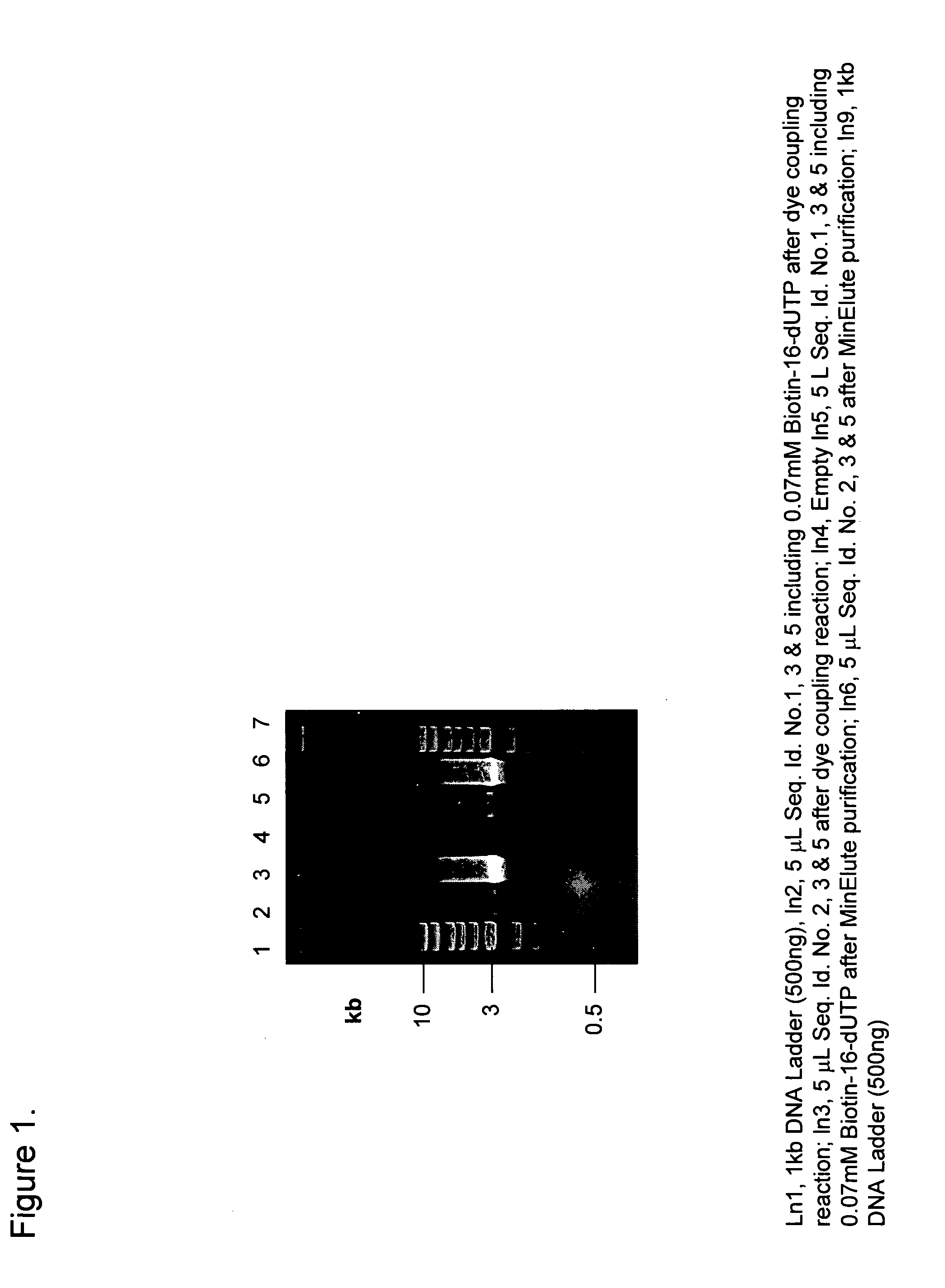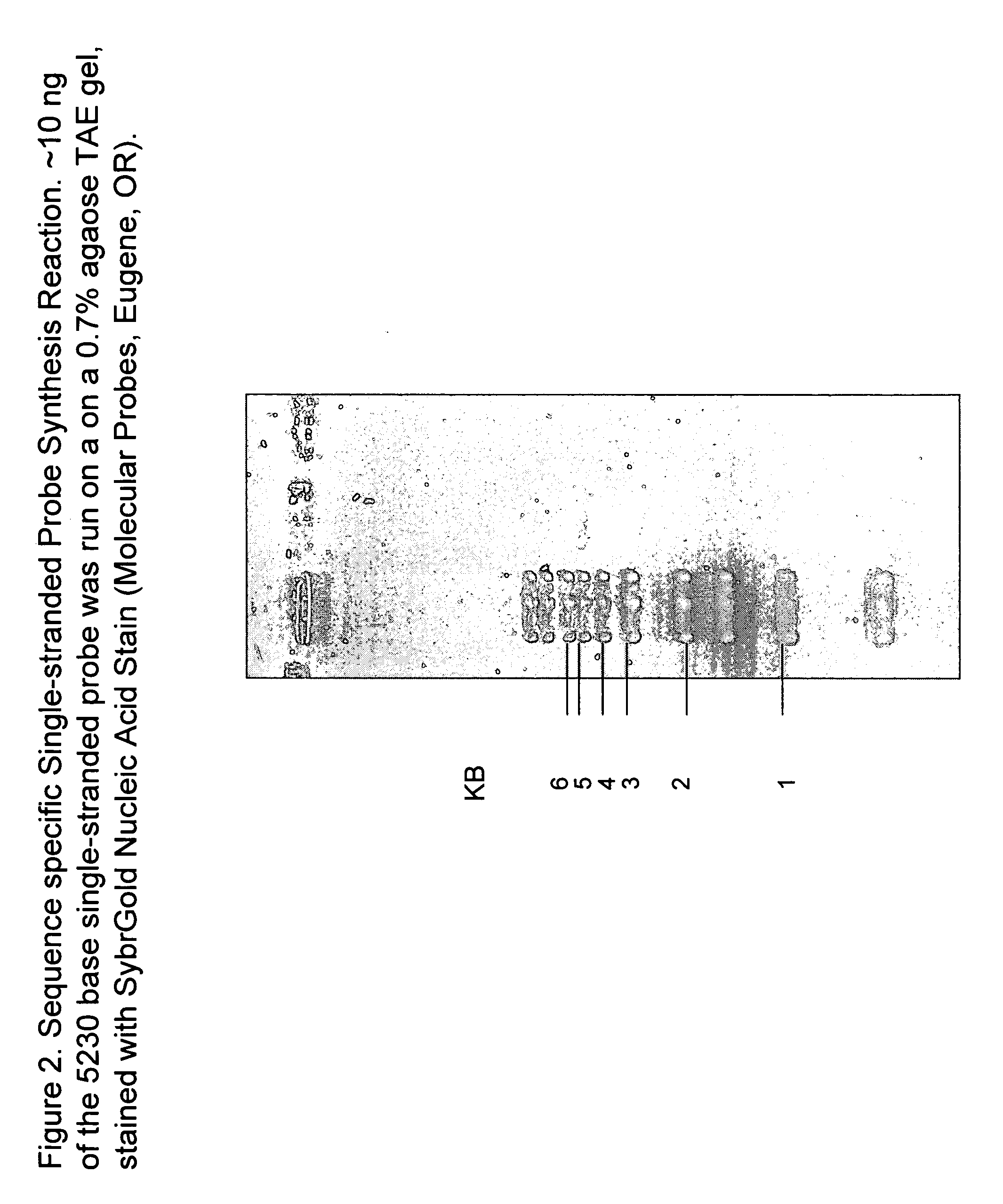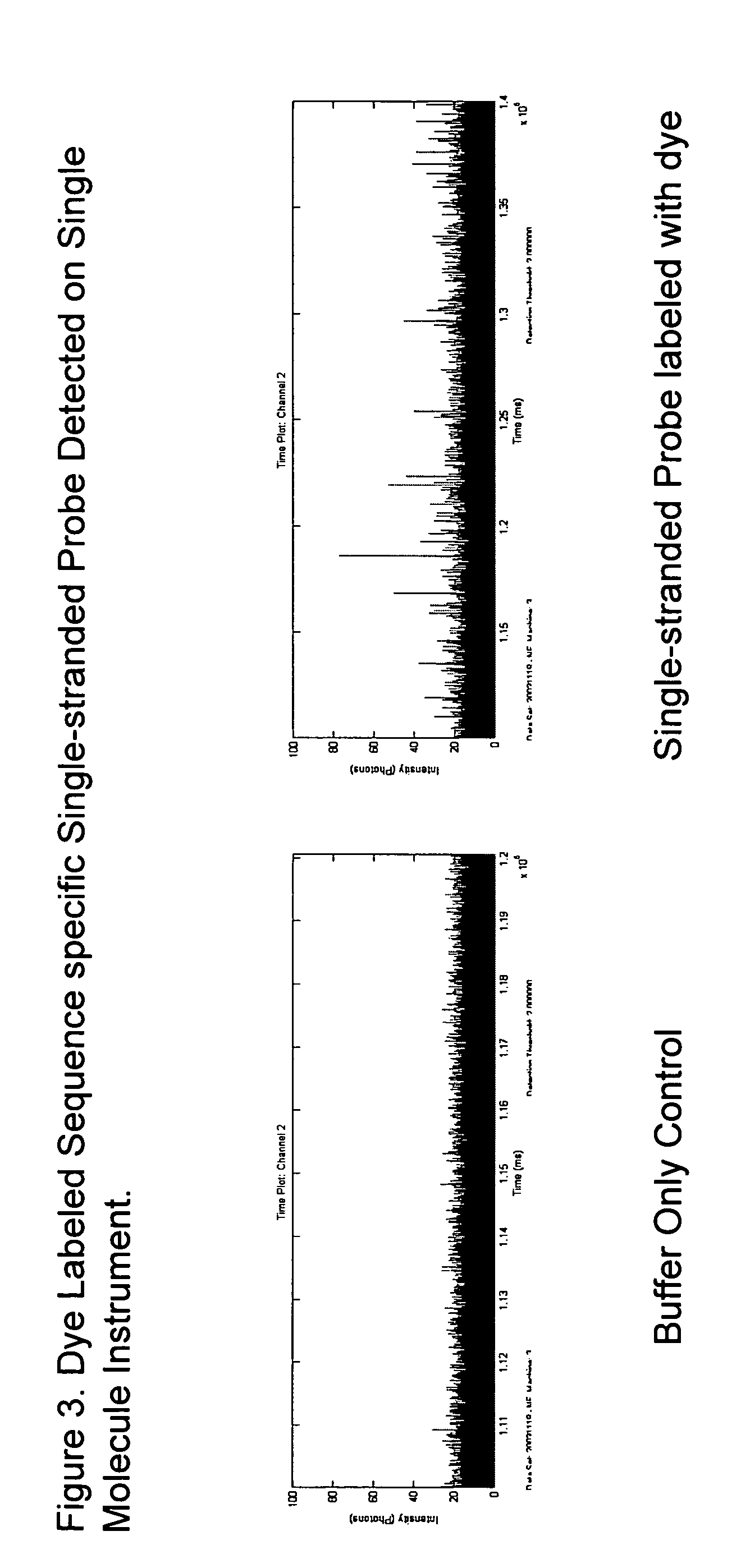Preparation of defined highly labeled probes
a highly labeled, probe technology, applied in the field of preparation of probes, can solve the problems of compromising the efficiency of primer extension, not being able to adapt to the use of prior-art methods, and destroying the effect of primer extension
- Summary
- Abstract
- Description
- Claims
- Application Information
AI Technical Summary
Benefits of technology
Problems solved by technology
Method used
Image
Examples
example 1
Sequence-Specific Double stranded Probe Synthesis using PCR
[0144] This protocol describes the materials and methods used in the synthesis of a sequence-specific probe with a double stranded tail to which fluorescent tags were added.
[0145] LNA-DNA Chimera Sense Strand Primers
(SEQ ID NO:1)5′ gct cag gaa caa aga aac gcA GGG AGA GAG GAA GGA at tca cca gtc aca cga cca(SEQ ID NO:2)5′ cag taa cag ata caa act caA GGG AGA GAG GAA GGA at tca cca gtc aca cga cca
Blocking Oligo
[0146] 5′ CTCCTTCCTCTCTCCCT (SEQ ID NO:3)
DNA Antisense Primers
[0147] (Seq. Id. No:4 will generate a 5 kb product and Seq. Id. No:5 will generate a 2.6 kb product)
5′ attgatgccaccttttcagc(SEQ ID NO:4)5′ ggtgctgctatcgatggttt(SEQ ID NO:5)
[0148] UPPER CASE=LNA, lower case=DNA
Annealing LNA-DNA chimera with Blocker LNA oligo
[0149] The LNA-DNA chimera and LNA blocker oligo were mixed in 10 mM Tris-HCl (pH 7.4), 0.1 mM EDTA, overlaided with mineral oil, and annealed by heating the mixture to 105° C. for 2 minutes and...
example 2
Sequence Specific Single-Stranded Probe Synthesis Reaction
[0152] In this example, 0.15 □M oligonucleotide 5′ ggtcagtgccttgagtaacagt (SEQ ID NO:6), complementary to nucleotides 2090 to 2112 of the phage strand of M13 mp18, is used to prime a single strand DNA synthesis reaction using 0.2 mM unmodified dNTPs, 1× NovaTaq Buffer, and NovaTaq polymerase (Novagen, San Diego, Calif.) off of 1 ng / □l M13 mp 18 linearized at position 4131 with PacI. The reaction was cycled through 20-35 cycles of 94° C. for 15 seconds, 40-60° C. for 30 seconds, and 68-72° C. for 60 seconds to yield a single strand DNA product of 5230 bases in length (see FIG. 2). The approximately 5kb single strand DNA fragment was then fluorescently labeled dye.
[0153] The dye labeled single strand probe was analyzed by single molecule detection, with having a range of intensities from 25-80 photons with a background of approximately 18 photons as shown in FIG. 3.
example 3
Ligated Probes
[0154] In this example, an oligonucleotide adaptor complex made up of a recognition oligonucleotide and a stitching oligonucleotide will be ligated onto a longer, fluorescently labeled, doubled strand DNA molecule.
[0155] UPPER CASE=LNA, lower case=DNA
[0156] The recognition oligo, 5′ aGggAagAaaGcgAaaGgaggcTgccagcgacgag (SEQ ID NO:7), has a 20 base 5′ recognition sequence complimentary to position 5,574-5,594 on the phage strand (or + strand) of M13 mp 18. The 3′ end is complementary to the stitching oligo, 3′ cgacggtcgctgctctcga 5′ (SEQ ID NO:8). These two oligonucleotides were annealed by combining 5 □M of each olignucleotide in 10 mM Tris pH 8.0, 50 mM NaCl, 1 mM EDTA in a 1.5 ml tube. The tube was placed in a 95° C. heat block that was cooled to room temperature over a one hour period.
[0157] To make the double strand tail DNA molecule to be ligated to the oligo adaptor complex, pBR322 was treated with the restriction enzyme DraI to yield two fragments with blunt...
PUM
| Property | Measurement | Unit |
|---|---|---|
| diameter | aaaaa | aaaaa |
| diameter | aaaaa | aaaaa |
| pH | aaaaa | aaaaa |
Abstract
Description
Claims
Application Information
 Login to View More
Login to View More - R&D
- Intellectual Property
- Life Sciences
- Materials
- Tech Scout
- Unparalleled Data Quality
- Higher Quality Content
- 60% Fewer Hallucinations
Browse by: Latest US Patents, China's latest patents, Technical Efficacy Thesaurus, Application Domain, Technology Topic, Popular Technical Reports.
© 2025 PatSnap. All rights reserved.Legal|Privacy policy|Modern Slavery Act Transparency Statement|Sitemap|About US| Contact US: help@patsnap.com



